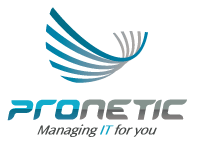Tech Insight : Carbon-Free Travel – What Is Hyperloop?
In this tech-insight, we look at what hyperloop technology is, how it has been tested and used to date, and whether it could be a viable form of carbon-free travel for the future.
What Is Hyperloop Technology?
First invented by mechanical engineer George Medhurst in the 18th century, the idea which became the ‘atmospheric railway’, envisioned conveying people in a vehicle along the inside of pressurised, evacuated tubes using uses differential air pressure to provide power for propulsion. This ‘hyperloop’ idea of almost frictionless travel (not touching rails) inside a tube, where huge speeds could be reached and travel times dramatically cut was the dream that formed the basis of the 1960s and 1970s ‘Hovertrain’. Although the project ended in 1975, a test version of this ‘hyperloop’ train managed to reach 104 mph in 1973, but the ‘Hypertrain’ was never put into production.
How The ‘Hovertrain’ Hyperloop Worked
The 70s Hypertrain acted rather like a land-based hovercraft that hovered on a cushion of air above a monorail-type concrete track and was propelled along by a linear induction motor (LIM) which used magnetic fields to produce thrust and, therefore, contactless (and frictionless) propulsion.
Although the focus today may be on developing a hyperloop transport method that is carbon-free as well as fast, this early Hypertrain had to use large, bulky induction motors and fans that needed to be permanently running to keep the Hypertrain in the air, therefore, making it rather environmentally unfriendly.
The Airlink Shuttle – Maglev Technology
The next use of hyperloop of note was in the Birmingham Airport AirLink shuttle (1984 to 1995) which was a train floating on magnets (known as ‘maglev’ technology), propelled along by a LIM.
Other hyperloop maglev trains have been used to connect JFK International Airport to Queens in New York City, in Shanghai, China, and in Japan in 2015, where a manned test train reached 370mph.
Elon Musk’s Hyperloop
Fast forward, and PayPal / Tesla founder, and SpaceX boss Elon musk wrote a much-publicised paper in 2013 about his idea for a “Hyperloop Alpha” travel system which could use magnetic pods levitating (using maglev) inside a tube and travelling at more than 1,000 km per hour, making it faster than a Boeing 747 jet aircraft!
Virgin Hyperloop Test
Fast forward yet further and, in November 2020, a two-seat Virgin Hyperloop prototype is reported to have travelled 500 metres, reaching 172 km per hour in only 6.25 seconds.
Challenges
There are, of course, many challenges to testing, building, and creating a new hyperloop infrastructure (underground or overground tubes, stations and more) and it could take decades to introduce a system across a country at scale.
Would Hyperloop Bring Carbon-Free Travel?
With a world climate crisis, environmental targets to reach, and the need to find a way to drastically reduce carbon emissions from industry, transport systems and more, would hyperloop offer carbon-free travel?
A recent US Department of Transportation (DOT) study, for example, estimated that Hyperloop routes could be up to six times more energy efficient than air travel (on short routes). Also, researchers at Hamburg’s Helmut Schmidt University looked at the effects of building a 300km, (mainly solar-powered) hyperloop route for freight in Northern Germany. They concluded that replacing thousands of road-based trucks with a hyperloop could reduce air and noise pollution, and reduce greenhouse gas emissions, as well as the knock-on benefits of reducing congestion and road accidents.
Unfortunately, the linear induction motors are used (LIM) for powering hyperloop tend to have high power consumption and are less efficient than permanent magnet linear motors.
What Does This Mean For Your Business?
The idea of creating an incredibly fast transport system for freight and passengers that could use electric motors and solar power would, of course, be hugely attractive to businesses in terms of time and cost savings (e.g. for supplies and distribution), as well as in reducing environmental impact. Fast, clean transport/travel by hyperloop could also have huge benefits for many other industries (e.g. travel and leisure) and could benefit city businesses of all kinds as cities and transport hubs would most likely be the first ones linked together. That said, there is a long way to go and many challenges to overcome before mainstream hyperloop travel becomes a reality.
